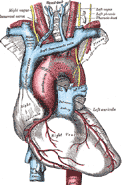
For important communications for those enrolled in this course, please log into bSpace.
Summer 2007 session:
Failed MP3 uploads to bSpace -- see below:
Aug. 7th, part 2 of 2.
Aug. 8th, part 1 of 2. WARNING: Volume increases at 1 minute!!!
Aug. 8th, part 2 of 2.
Aug. 9th, part 1 of 2. WARNING: Volume increases at 40 minutes!
Aug. 9th, part 2 of 2.
-
-
|
-

Note: IB132L is the laboratory course for IB 132 Survey of Human Physiology
About the Spring 2007 IB132L Course
Professor:
Dr. Steve Lehman
e-mail: slehman@berkeley.edu
office hours: by appt.
in VLSB 5112
Lab Instructors:
Sean Gross
e-mail: sgross@berkeley.edu
lab sections: Mon 9-12, Tues 2-5
office hours: TBA
Karen Chan
e-mail: yachan@berkeley.edu
lab sections: Tues 9:30-12:30, 2-5
office hours: TBA
Greg Byrnes
e-mail: byrnes@berkeley.edu
lab sections: Weds 9-12, 2-5
office hours: TBA
Nastaran Faghihnia
e-mail: nastaran@berkeley.edu
lab sections: Thurs 9:30-12:30, 2-5
office hours: TBA
Texts: Widmaier, Hershel, and Strang, 2006. Vander, Sherman, and Luciano's Human Physiology,
10th edition.
Lehman, S.L. and Colton, T. F. 2007.
Mammalian Physiology Laboratory, Spring 2007. (available at Copy Central, 48 Shattuck Square)
Lab Room : 3048 Valley Life Sciences Building
Prerequisites: You are expected to have taken IB 131 (Human Anatomy) or an equivalent course. IB132 is a pre- or co-requisite.
Note: Students may not earn credit for both IB 132 and either MCB 32 or MCB 136.
Goals
"A lab is where you do science" (Thornton 1972).
In this course you will learn some of the skills of the professional
scientist as you gain hands-on experience measuring physiological
parameters. This 2-credit laboratory course is designed to complement
the lecture course.
In this lab you will learn to do the following:
- conceive of novel questions that can be investigated scientifically
- devise testable hypotheses and experiments to answer those
questions
- use a variety of techniques to measure physiological parameters
and use a computer to record and manipulate the data
- interpret scientific data, including graphing and simple
statistics
- write up an experiment as a journal article
- critically review a paper
- present research findings orally in the format used at scientific
meetings
- use common spreadsheet, statistical, data acquisition, and
presentation software
- work effectively in a team
In some labs, you will be given a set of specific questions
to be investigated, along with a description of the system and
techniques you can use to answer them. In other labs, you will
be asked to conceive of the investigation yourself, starting
by identifying questions you want to answer. In these labs our
role will not be to tell you what hypotheses to test, what experiment
to do, and how to get "the right answer." Frequently
there is no "right answer." It will be up to you to
figure out what you think the answer should be, to gather data
to support or refute your suspicion, to interpret these data,
and to persuade your peers and instructors that your analysis
is correct. Although you will have access to plenty of help along
the way, the primary responsibility for a successful investigation
rests with you.
Your investigations will focus on organ-level and systems-level
human physiology. In most labs, you will be both the experimenter
and the subject, as you employ a variety of techniques for measuring physiological parameters non-invasively in humans. A few labs
will employ animal or inanimate models for experiments that are
not feasible or ethical on human subjects.
Department of Integrative Biology
U. C. Berkeley
Last updated 2/07
- Copyright © Department of Integrative Biology.
All rights reserved 2006
-
|